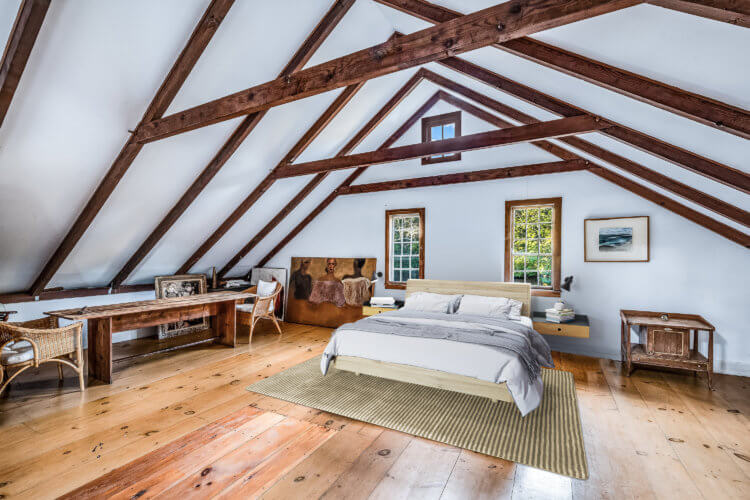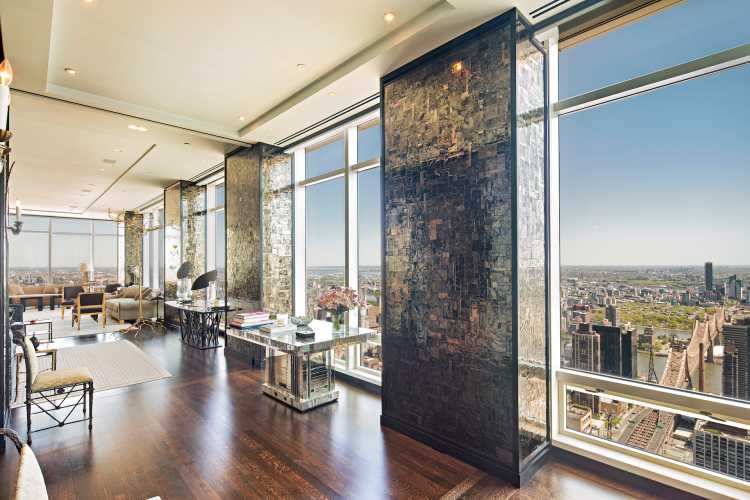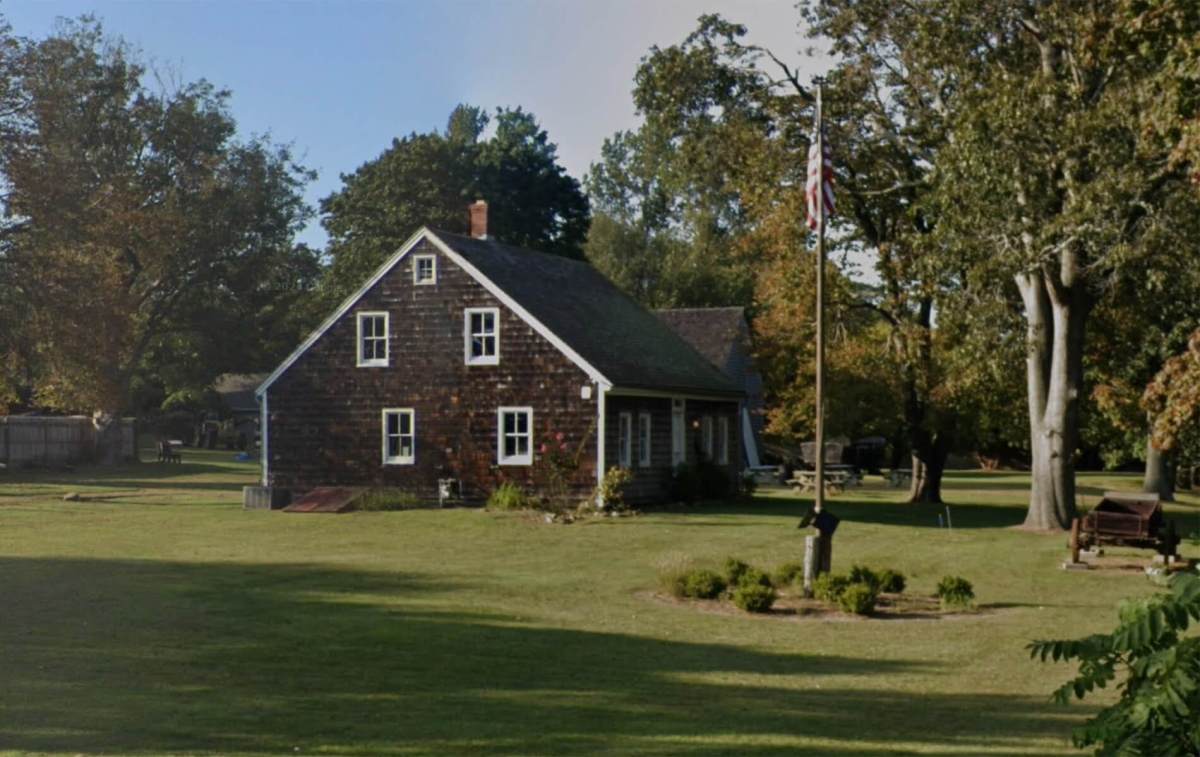A place with a rich history tied to East Hampton’s artist colony, the Springs house affectionately known as Squirrel Hall, is on the market for the first time in 60 years.
Sotheby’s International Realty has it listed at $2.475 million with agents Jenny Landey and Ethan Dayton.
For four years in the 1950s, the property was the home and art studio of Conrad Marca-Relli, a member of the first generation of abstract expressionist painters, and its location at 852 Springs Fireplace Road put it, at the time, right next door to Jackson Pollock and Lee Krasner’s home and studio. The two properties are no longer adjacent, as a lot was carved out in-between later.
The rustic compound, which sits on 2.39 acres, is not far from the center of the small Springs community, near the Springs General Store and Ashawagh Hall. Squirrel Hall used to be a community meeting place back when Ashawagh Hall was still being used as a schoolhouse, and earned its name because it had once been ostensibly taken over by squirrels, according to a 1977 article in The East Hampton Star about a talk given by the Springs Historical Society.
According to the paperback book Springs: A Celebration, Squirrel Hall was purchased from Springs Presbyterian Church in 1910 and then later sold to help pay for renovations at Ashawagh Hall.
It was from 1953 to 1956, while Marca-Relli and his wife, Anita, lived in and fixed up Squirrel Hall, that the artist was considered one of his most creative, according to The New York Times in a piece about a 2011 exhibition of his work at the nearby Pollock-Krasner Study Center.
A friendship blossomed between him and Pollock and other abstract expressionists, such as Willem de Kooning, many of whom Marca-Relli had known from his time living in New York City. In fact, when Pollock was killed in a car crash along with a woman on Springs Fireplace Road in 1956, it was Marca-Relli whom police brought to the scene to identify his body. He would go on to make an abstract collage called “The Death of Jackson Pollock” and soon left the area.
Cynthia Fay de Moura bought the house from another artist in 1959 and still owns it today, with her husband, Giovanni de Moura. Known as C.Y to friends, de Moura discovered Springs while working at the Guggenheim Museum and visiting the area. “I wanted it,” she says. “Everything was black and white, simple—extremely simple. There was one bedroom up the stairs.”
She loved the idea of it once being a meeting place for people. Her son made a large sign displaying its name that hangs on the side of the house.
Just before a trip to Siberia, where she would lead expeditions and lecture, a local realtor brought by a couple looking to rent her home. They happened to be Marilyn Monroe and her then-husband, playwright Arthur Miller.
“I was rushing off,” de Moura recalls. “I didn’t feel like spending a lot of time with them,” but she remembers the famous couple standing in her house having a look around.
“She was beautiful. She had on a white dress, as I remember, and he was kind of sloppy-looking in khakis, as I remember. I took them into the front door and showed them where they would be sleeping, which was up these terrible, rickety stairs, and I warned them about the stairs because I had fallen up them several times.” The stairs were handmade by Marca- Relli, she says.
The couple stayed for a week and there were no incidents on the stairs, as far as anyone can recall.
The house, with parts that date to the 1800s, is larger now. It includes a shingled, four-bedroom, three-bath main house and a saltbox that dates to the 1850s.
Part of Squirrel Hall was used as an addition to a house that had been damaged by a fire in 1976. “The division of, and addition to, the early structures, and their having been moved from one site to another, has made historic research and documentation of Springs difficult and controversial,” The East Hampton Star wrote in 1977.
A friend of the de Mouras, Adelaide de Menil, an art patron, photographer and heiress to the Schlumberger oil-company fortune, gifted the saltbox to them in 2007. She donated about a dozen other 18th- and 19th-century houses and barns she and husband Edmund Carpenter had acquired (six were donated to the Town of East Hampton and now make up the new Town Hall complex).
For the move, the roof had to be cut and it was placed on a foundation, connected to the main house with an atrium, Gio de Moura says. They were also given a barn, but it was beyond restoration. “We managed to get some of the beams, which we put into out house,” he says, adding that they also took old antique bricks from the de Menil property on Further Lane and put them in their backyard.
While updated and added onto through the years, the 3,000-square-foot house remains a throwback of sorts to a time when Springs was an artist colony and homes were simpler. The living room has the exposed barn beams (a large bedroom on the second floor also features the beams) with a skylight above, a brick fireplace and clerestory windows with stairs leading to an ensuite master bedroom overlooking the meadow and preserve in the rear of the property that lead to Accabonac Harbor.
“I have, many times, had the fields behind there mowed so you can go straight down to the water and swim,” de Moura says.
The sitting room also holds a brick fireplace, which was built by Marca- Relli, who was said to have spent a great deal of time renovating the property. The room also has an authentic oval window and a floor-to- ceiling bookcase that stretches from the wall to the fireplace. A staircase— long repaired—leads to a loft where one of the bedrooms is located above the sitting room.
Around the same time as they renovated the house to include the donated building, they also renovated the detached building, once used by Marca-Relli as an art studio.
“It’s not your regular, shiny, chrome house with a lot of glass,” Gio de Moura says. The couple hopes that whoever purchases Squirrel Hall will embrace its storied past.
This article appeared in Behind The Hedges’ November 2020 issue.
Email tvecsey@danspapers.com with further comments, questions or tips. Follow Behind The Hedges on Twitter, Instagram and Facebook.



























